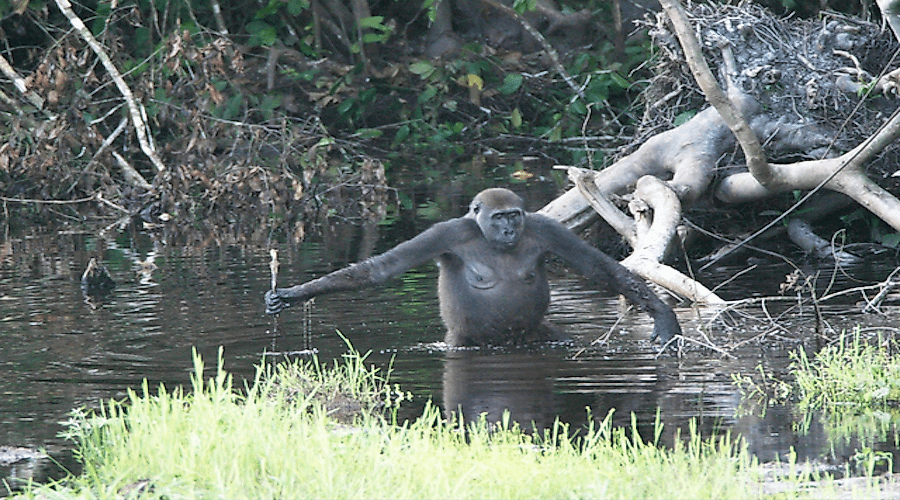What is the Difference Between Apes and Monkeys?

Both apes and monkeys belong to the family of primates, meaning they share common features with other primates, such as forward-facing eyes, highly flexible limbs (arms and legs), and dexterous fingers. Humans are primates. Apes and monkeys share confusing similarities include their facial features and a presence of short, dense hair covering their entire bodies, except for the face.
There are, however, significant differences that distinguish the ape from the monkey when more intricate physical characteristics and their perceived mental capabilities are assessed.
Presence Or Absence Of A Tail
The most distinguishable physical difference between the ape and the monkey is the presence of a tail. Whereas most monkey species have long flexible tails on them, the ape family has no visible tail.
Skeletal Structure And Movements
Other physical differences are recognizable from their body and skeletal structures. The ape has a larger body structure than most monkey species and assumes a more upright posture, even though it tends to use its knuckles to support its weight while moving on the ground. The structure of the monkey, on the other hand, is formed in a typical quadrupedal position, similar to other four-footed animals like cats and dogs, and they move on all fours in the same sort of way. The ape’s upper limbs are longer than the lower ones, with shoulders that are visibly strong and flexible. The ape’s arms straighten out fully at the elbow, and its wrists and forearms can achieve a wide range of movements.
Monkeys, on the other hand, have smaller narrow shoulders. Quite unlike their ape counterparts, the monkey’s arms cannot straighten out completely at the elbow, and they have limited movement of the wrist forearms. These body and skeletal variations determine their locomotor systems and how differently they move about, especially in trees where they mostly live. While apes can swing from branch to branch, supported by their upper body strength and facilitated by their flexible shoulders, forelimbs and dexterous wrists, monkeys are unable to swing in this manner. Instead, monkeys tend to run along the tops of branches by jumping, rather than swinging. The monkey uses all its fours to hang onto the branches, assisted by its tail, which also helps with balance.
Brain Size And Life Span
Scientific studies have bought out other numerous facts which differentiate the ape from the monkey. For example, the brain size of an ape is larger than that of the monkey. Apes also live twice as long as monkeys do, reaching up to 60 years of age.
Intellectual Capabilities
Regarding intellectual capabilities, apes are perceived to be superior to monkeys, exhibiting higher cognitive skills and a more complex social-behavioral system. A clear example of this cognitive difference is observed in the ape’s ability to make and use tools for nut-cracking, hunting, and play. Such potential has not been seen in monkeys. As a matter of fact, scientific theories that support evolution place the ape much higher up on the evolutionary scale than the monkey, because of the ape’s closer comparison to the human species.











